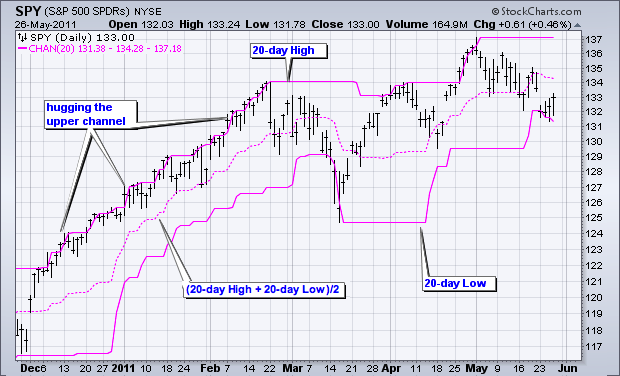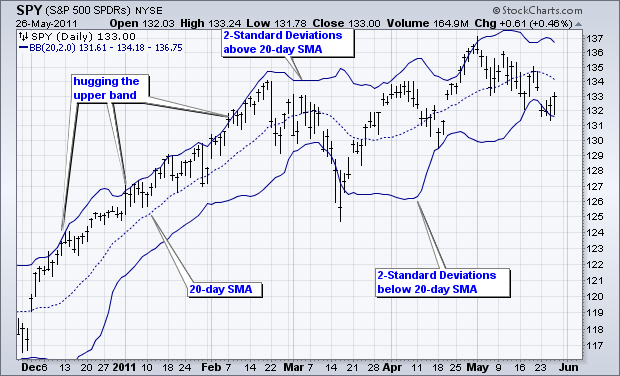|
|
Both the Price Channel and Bollinger Bands consist of three lines, a middle line and two outer lines. These indicators produce similar lines and signals, but the lines are calculated differently. For a 20-day Price Channel, the upper line is the 20-day high and the Lower line is the 20-day low. The middle line is the average of the 20-day High and 20-day Low. The chart below shows the S&P 500 ETF (SPY) with a 20-day Price Channel.


Bollinger Bands start with a 20-day SMA as the middle band. The upper band is placed two standard deviations above the moving average and the lower band is two standard deviations below the moving average. Standard deviation is a measure of volatility. Bollinger Bands react to changes in the moving average and volatility, while Price Channels are driven by changes in the high-low range for a given period. While these indicators have their differences, they generate similar signals and are used the same way.
The overall trend plays a part in overbought and oversold signals for Price Channels and Bollinger Bands. Consider that SPY has been in an uptrend since March 2009. This means moves above the upper line are unlikely to signal overbought conditions that could lead to a pullback. Notice how the ETF hugged the upper line/band during the advance from early December to late February. In contrast, moves below the lower line are more likely to signal oversold conditions that could lead to a bounce or reaction low. Notice how the ETF dipped below the lower line/band in March and quickly recovered. SPY is currently testing the lower line/band and looking oversold after the May decline. The opposite is true during a downtrend. Moves above the upper line are considered overbought, but moves below the lower line do not always generate oversold bounces.


